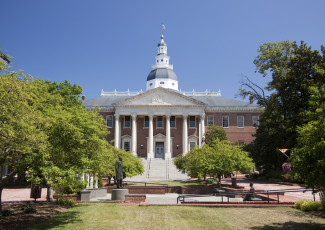Should Funding Be Tied to Student Success?
By Rebecca L. Weber
March 26, 2015
Community colleges in Nevada are losing millions of dollars because of poor student attendance. Here’s how one college is adjusting to the lean budget and focusing on students.
Community college students in Nevada who stop attending class and fail because of it — either because they’re academically underwater or because of a nonacademic reason, such as a new or better job — will collectively cost their campuses millions of dollars, according to a new funding formula implemented by the Nevada Board of Regents.
The new policy, dubbed the “Unearned F” rule, is a major shift. Previously, community colleges such as Truckee Meadows Community College (TMCC), in Reno, Nevada, got funding for all students who were enrolled three weeks into the semester. Now, if those same students stop attending class, the community college will lose its funding for those students. Attendance data from 2013–14 are being used for the initial calculations.
When a student earns an F — but still completes the class — community colleges will continue to receive funds.
The new performance-based funding model is intended to provide an incentive for completion. “That’s the thinking behind this,” says Maria Sheehan, president of TMCC.
But the unintended consequences of a radically reduced budget — TMCC is looking at nearly $1 million less per year — will mean fewer wraparound services. Ironically, many of the very students who find themselves struggling to complete classes are those who could benefit from support such as tutoring and counseling.
Facing funding cuts
Administrators are making campuswide efforts to find every single dollar that can be saved. “Everything is open for review — all expenditures,” including operations and faculty cuts, Sheehan says.
“It really covers just about everything we do. We would like to use those lost dollars for students. More counseling, more tutoring, more supplemental instruction — all those things that we know really do make a difference for our students,” she says. “We try to bring as many students as we can afford to a summer bridge program.”
Had the new policy rolled out in stages over a few years, there could have been time to implement strategies to see what would be most effective.
Differing missions
Two public universities — The University of Nevada, Reno, and the University of Nevada, Las Vegas — will gain financially under the new system, with each receiving nearly $4 million in additional funds, reallocated from community colleges. Both universities have low rates of unearned Fs.
Elena Bubnova, director of Institutional Research at TMCC, says community college students are much more prone to dropping classes. “It’s a bigger challenge than for universities,” she says.
Bubnova adds that the new approach does not take into account the differences between students at two- and four-year institutions, and the challenges of getting community college students to the finish line. “Our students do have a lot of basic skills deficiencies that need to be addressed. Time management, lack of support, first generation to go to college — all of those things are where services come in,” she says.
Supporting students
“The issue of completion is something we talk about every single day. We’re raising awareness of what happens to students once they withdraw,” Sheehan says.
Faculty members are getting involved to a greater extent, in terms of communicating with students. The college’s Early Alert/Progress Report Program identifies and offers one-on-one time to struggling students who have missed classes and assignments.
A new marketing campaign has placed posters in classrooms in an effort to catch students before they walk out the door.
“It’s pretty early to see what will make a big difference,” Sheehan says. “We’re reaching out to faculty members, letting them know that they have to get engaged with students earlier.”
Has your community college faced massive, unexpected budget cuts? In the Comments section below, tell us how you’ve worked to support vulnerable students.













